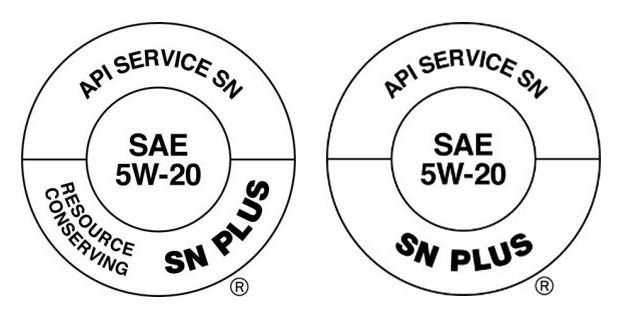Fuel economy is everything these days, and automakers are doing all they can to give drivers the right combination of power and efficiency. But you seldom get something for nothing, and experts warn that some engines can be ticking time bombs, susceptible to an issue that can potentially cause severe internal damage.
And the worst part is that it’s virtually impossible to predict if, or when, it could happen to yours.
The problem is known as low-speed pre-ignition, or LSPI, and it’s most common in small, turbocharged gasoline direct-injection (GDI) engines. These are becoming popular with many automakers because they check most of the boxes: the downsized engines are more efficient, while the turbo boost gives the power that improves drivability for the consumer. To further improve mileage, they’re hooked to multi-speed transmissions. All of this allows engineers to produce high torque at lower engine speeds – which is the “low-speed” portion of LSPI.
The pre-ignition part is when the fuel-air mixture spontaneously ignites prior to the spark plug firing. No one’s really sure precisely what can trigger it, although some of the conditions suspected include fuel sprayed on the cylinder wall, oil or fuel droplets accumulating and igniting, or heated carbon deposits that break off the piston’s top in the combustion chamber.

It’s not the same as the pre-ignition engine knock that can be caused by low-octane fuel. Modern engine computers can overcome this by adjusting the timing when their knock sensors identify the problem. LSPI, also known as super-knock, mega-knock, or stochastic pre-ignition, is sudden and catastrophic, and because it’s sudden and unpredictable, knock sensors can’t recognize it. “It happens at a different crank location in the combustion cycle [as opposed to octane knock],” says Scott Lindholm, global product application specialist for Shell Lubricants. “It’s also extremely high pressure, at four to five times the pressure generated by [octane] knock. You’re lighting this fuel-air mixture at the wrong time, expansion happens at the wrong time, and it’s extremely high combustion.”
Automakers are certainly aware of the problem – Ford has developed a test protocol for it – but fully understanding and eliminating LSPI hasn’t yet been achieved. According to Lindholm, the current strategy for car manufacturers is to avoid engines operating in the power/speed range that is most likely to cause LSPI, which also decreases power and fuel efficiency.
Another possible solution, or at least a preventative measure, is in improved oils, as lubrication appears to play a large role. GDI engines tend to be more prone to sludge and deposits, as well as more soot formation. Because the fuel is sprayed directly into the cylinder, there’s more chance of it diluting the oil, and creating the droplets that may be igniting.
The soot and particle formation can also present another problem: if these particles get into the engine’s oil, they can potentially cause premature timing chain wear.
Lubricant refiners are working on oils to combat the problem, which isn’t as easy as it sounds. Before you can even come up with an oil formulation, you have to figure out how to consistently test for the problem, and then finally start testing the lubricant. It’s an expensive process that can take years to complete.

In 2011, the American Petroleum Institute (API) released a new oil category, API SN, which provided better sludge and deposit protection over previous oil formulations. There’s now an improvement on that, API SN Plus (or SN+), which is designed specifically to help prevent LPSI in these engines. It was proposed by the automakers themselves, primarily using Ford’s LSPI test. The new oil formulation is currently on the market – Lindholm says that from his company, Pennzoil Platinum, Pennzoil Gold, and Quaker State Ultimate Durability provide LSPI protection, as well as dexos1 Gen2 for GM vehicles – but you won’t see the official SN Plus designation on any oil with the formulation until May 2018. When it does arrive, it will be displayed in the API “donut” logo on bottles, or on certain viscosities, will be indicated by a starburst API logo, which indicates the oil meets the API’s current highest standards.
New oil formulations are in testing, which will be known as SP and GF-6. These will build on the current new category for extra protection, including LSPI and timing chain wear, and improved fuel efficiency with ultra-low-viscosity oils. Timing hasn’t officially been announced, but the SP designation may be coming in 2019, while GF-6 oils could be the year after.
“Proper oil is critical for these engines,” Lindholm says. “LSPI can happen with any fuel blend that’s out there. It’s a recognized condition and the automakers program the engine controller to try to avoid the situation for LSPI. Today’s engines are more resistant than earlier turbo GDIs. It’s random and hard to predict, but they have a general idea of where the bad spot is.”
The best protection is to always use the oil recommended by the manufacturer for your engine, whether you’re getting your maintenance done at a dealership, or at a garage or quick-change shop. The recommendation should be in your owner’s manual, or if you’re not sure, call a dealer or your automaker’s customer-service line, and specify that you’re asking about any potential LSPI concerns. These oils won’t be the cheapest on the shelf, but as we mentioned, you seldom get something for nothing.



